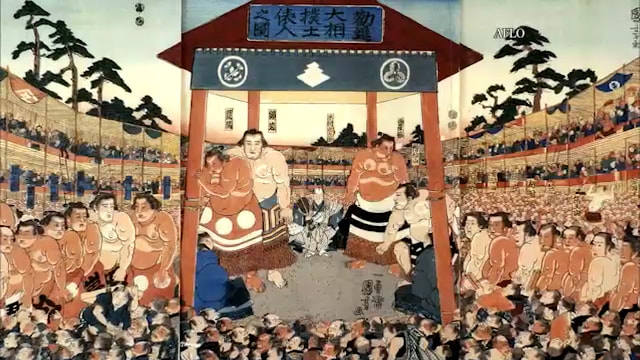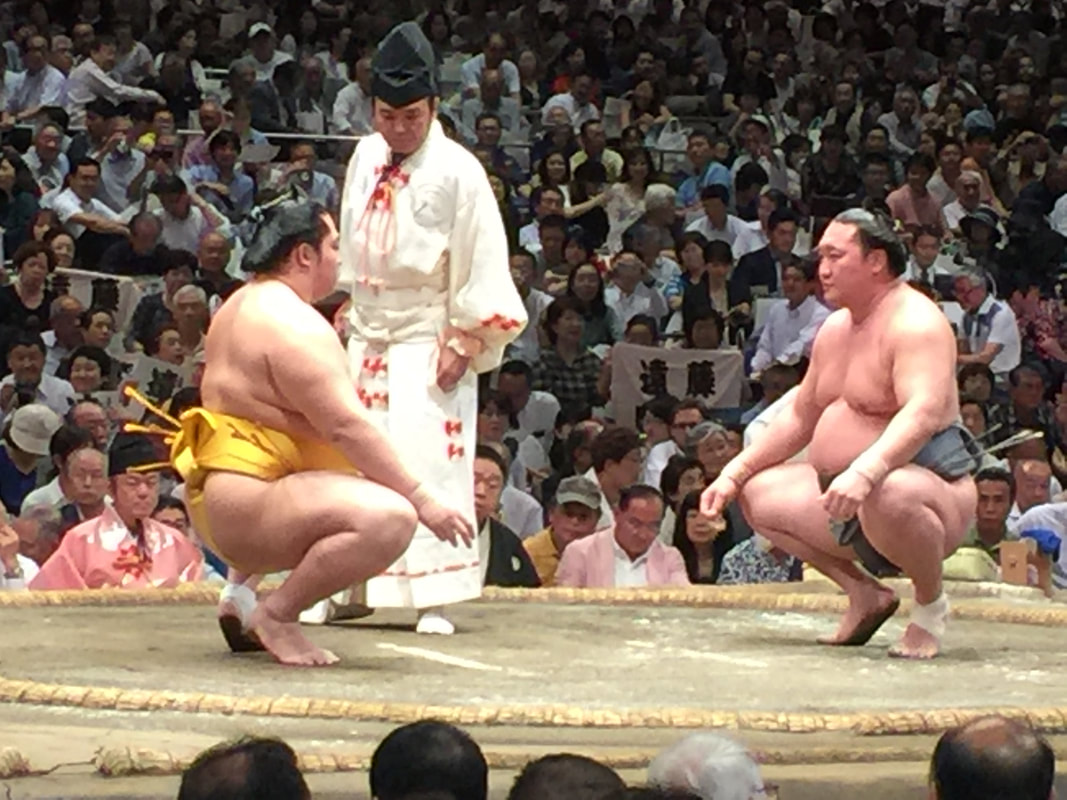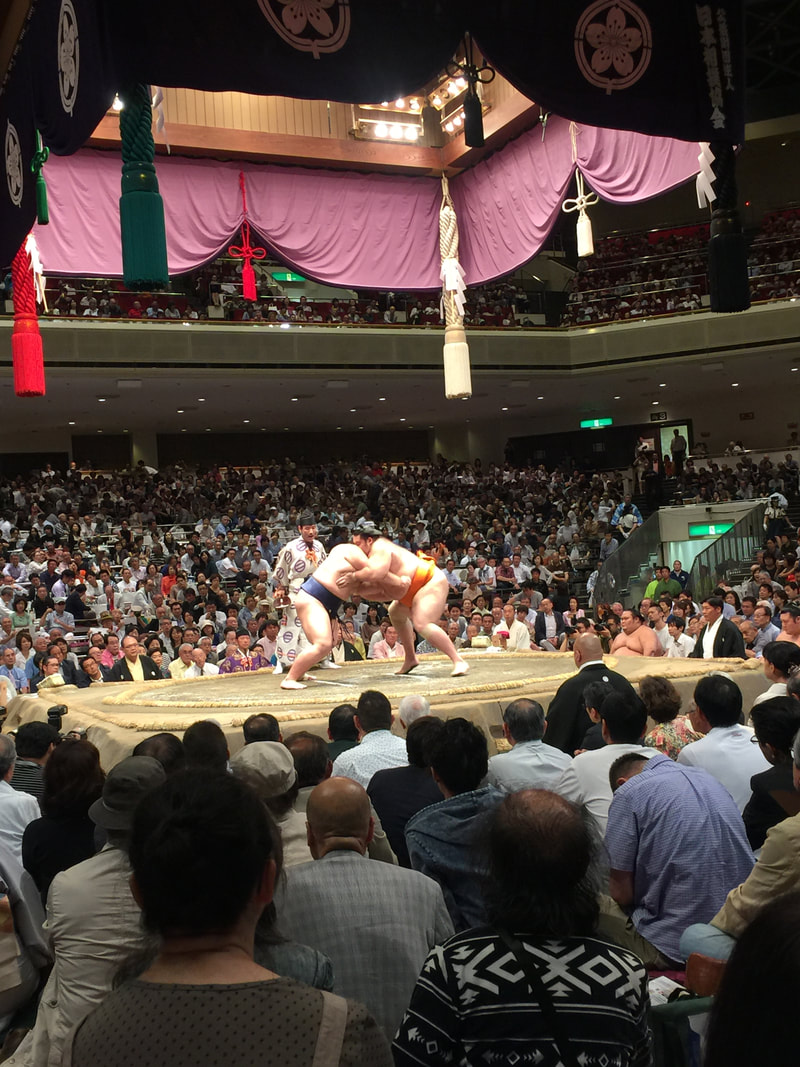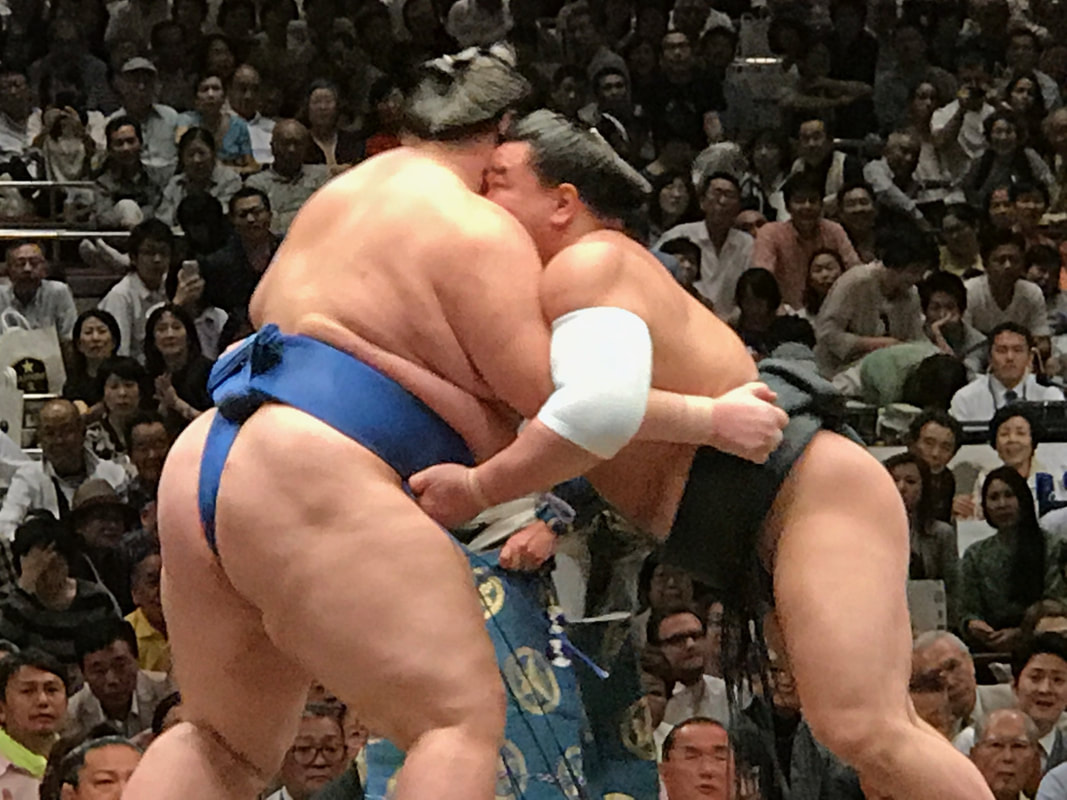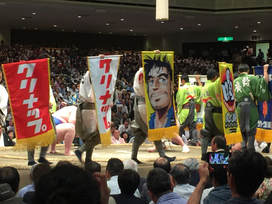
3,000 sumo fans filled the stadium and cheered for their favorites as each top-division rikishi (wrestler) was announced, ascended and circled the dohyo, the ring.
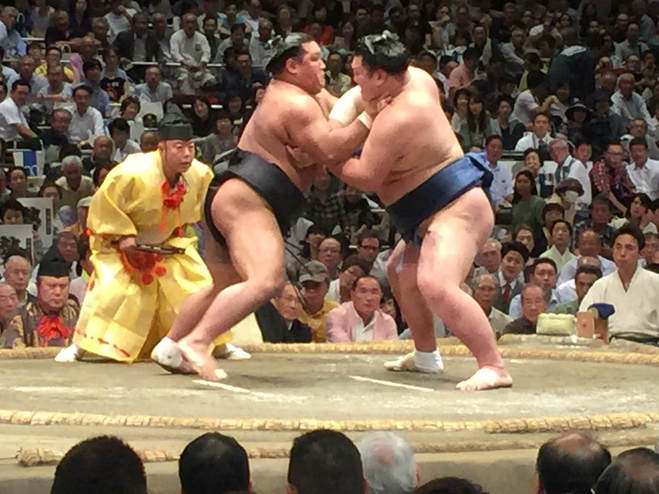
I have been a true fan of Sumo for only a couple of years. Thanks to NHK World T.V. coverage, I am able to watch and learn, and enthusiastically choose my favorite wrestlers: Harumafuji, the top level Yokozuna from Mongolia (who will go on after this day #12 to win the Grand Tournament championship in an exciting tie-breaking match with Goeido. I will see another fave, Takayasu, and Ura and Ishiura, younger smaller wrestlers with speed and incredible skill, and Kotoshogiku, whose signature pre-match back bend elicits a lot of delight from the crowd.
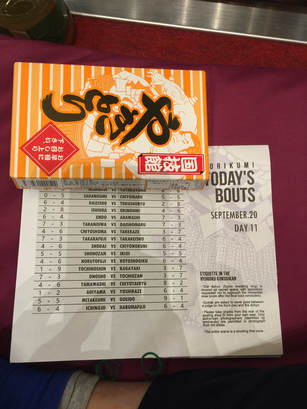
Japan’s National Sport was begun as entertainment during the fall festivals of thanksgiving for the rice harvest at Shinto shrines 1500 years ago. Eventually it became so popular that it rose to be the central event. The wrestlers are naked, save for a thick woven silk belt called a mawashi wrapped around their waist and up between their legs. The tournament is considered a sacred event with many rituals carried over from ancient times in order to connect with the gods, offer thanksgiving, to purify the fighting space, and demonstrate that there are no weapons involved.
The next Grand Tournament begins tomorrow in Fukuoka.
I will be watching the 15 days of matches, continuing to learn, continuing to enjoy, and be warmed by the memories of actually being there, in person.



